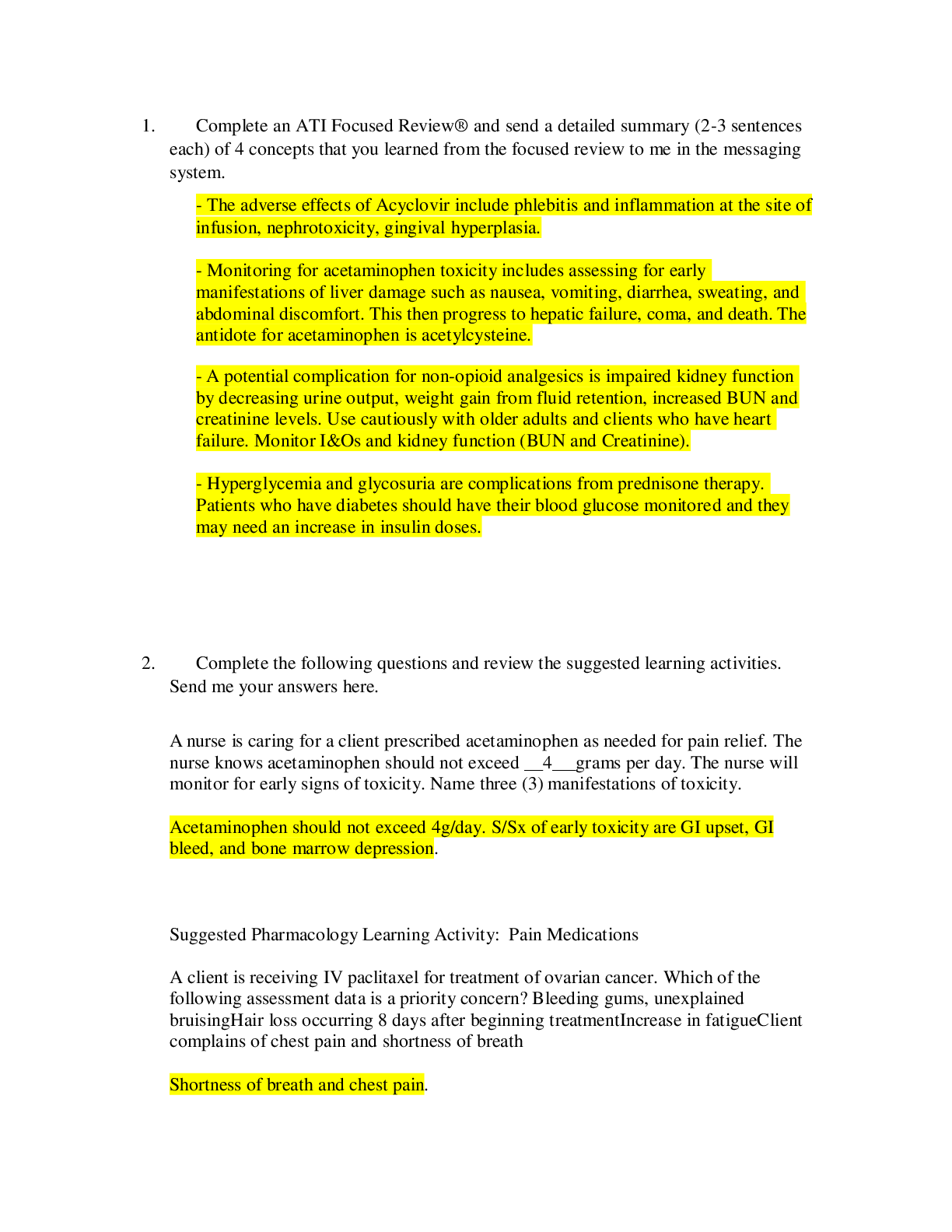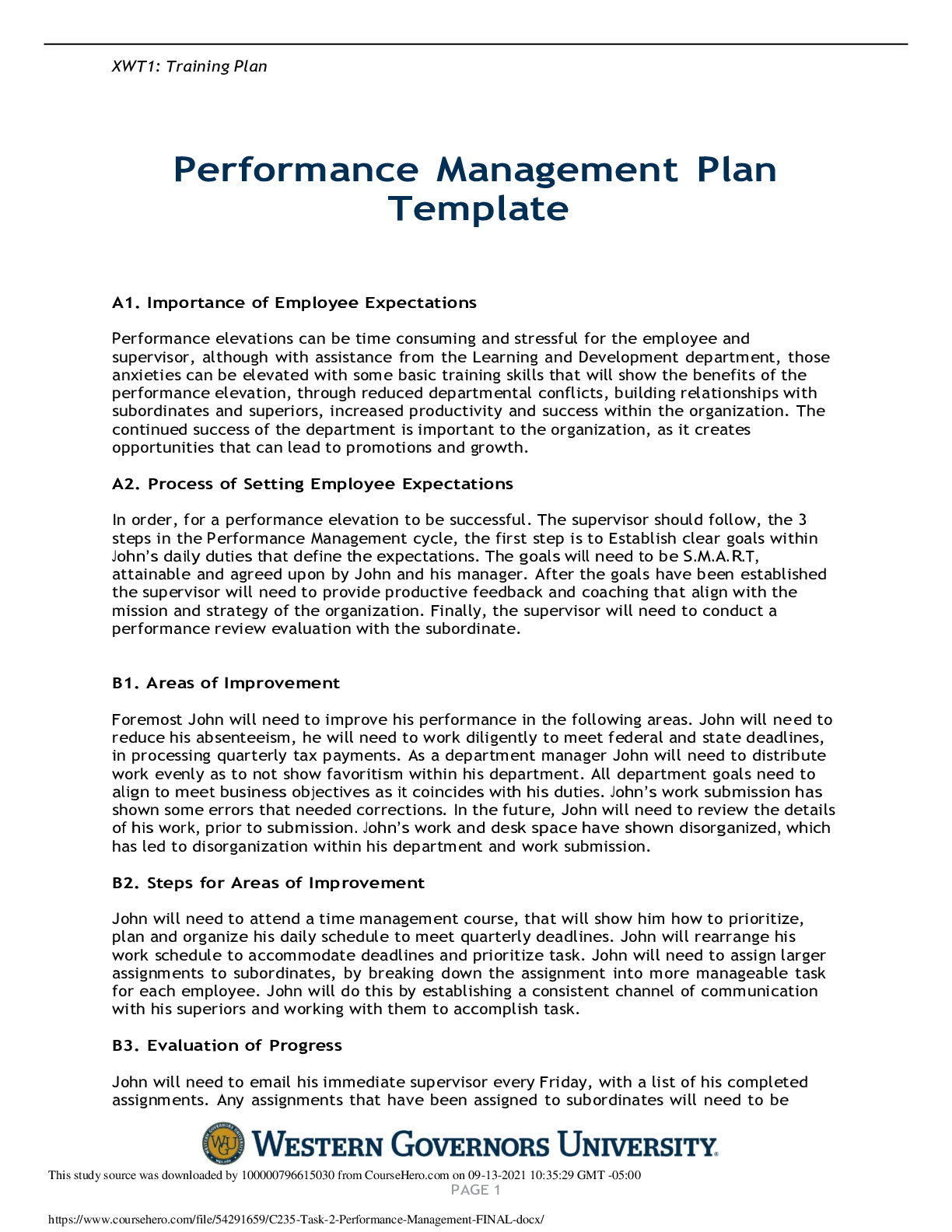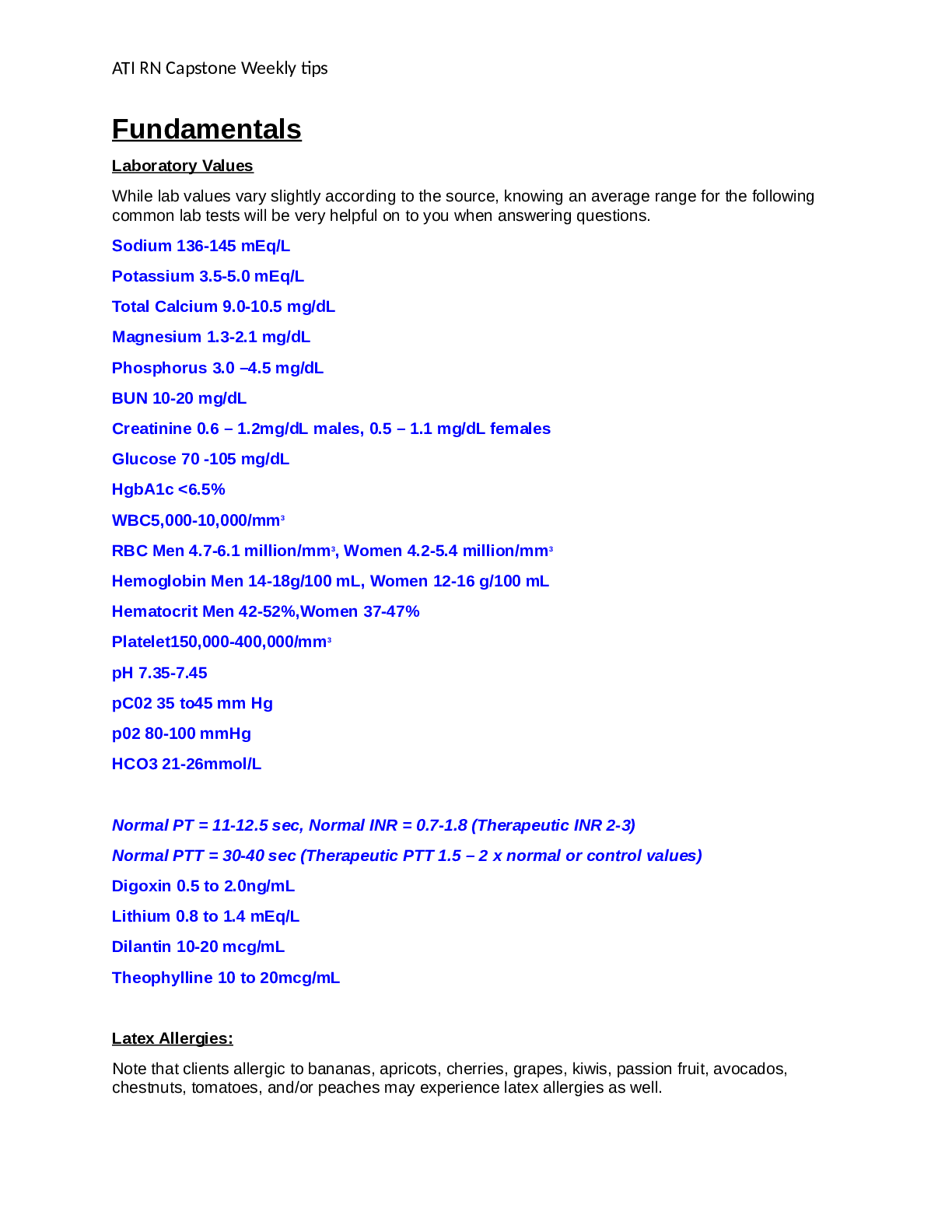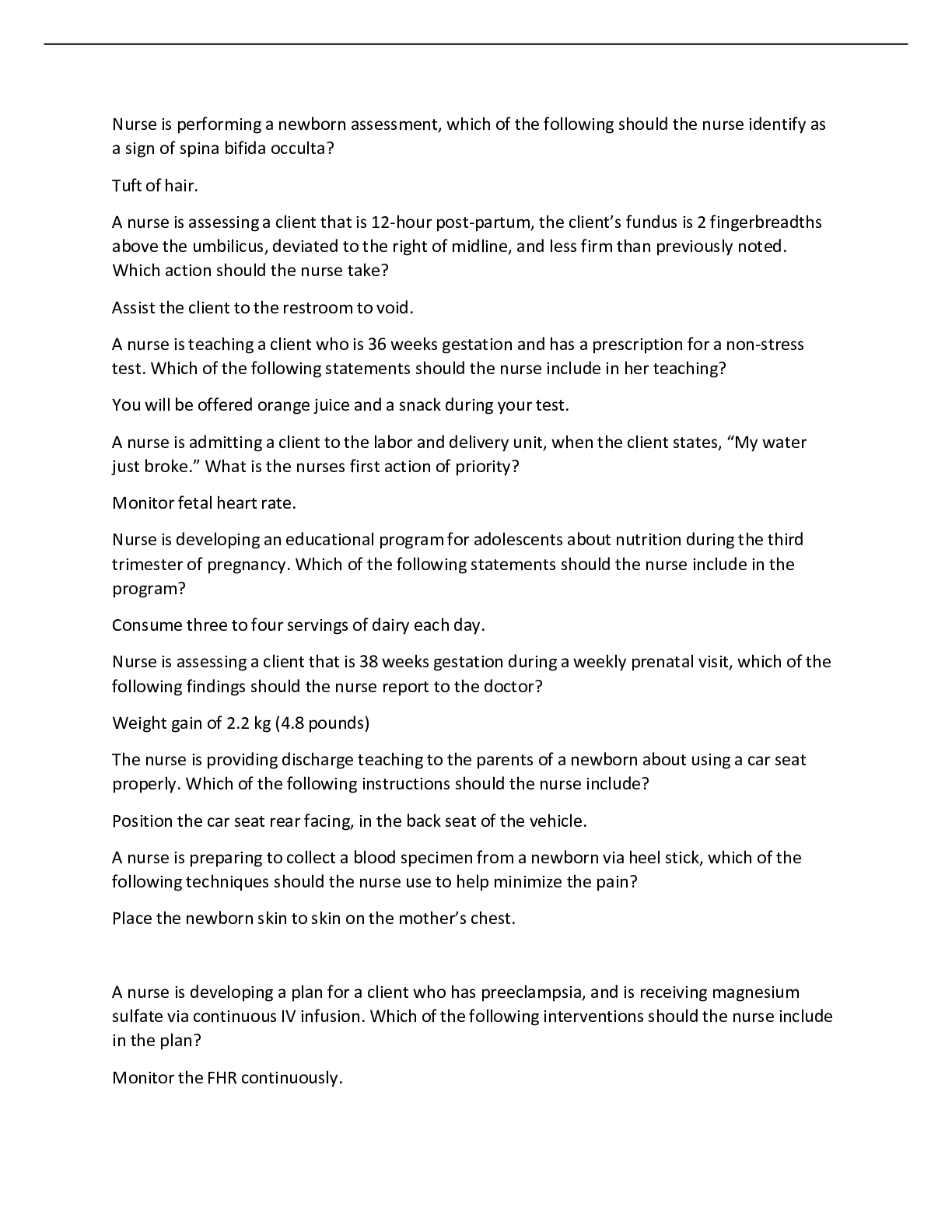*NURSING > STUDY GUIDE > NR 446 Exam 2 -Chapters 7, 8, 9, 10,12, 13, and 14 (All)
NR 446 Exam 2 -Chapters 7, 8, 9, 10,12, 13, and 14
Document Content and Description Below
NR 446 Exam 2 Chapters 7, 8, 9, 10,12, 13, and 14 page 1 of 3 Blue Print Helpful hints to study. Please review the chapters covered. Questions are generally application of knowledge (critical think... ing to answer the questions). To do this you need to have a basic understanding of content to be able to answer the questions. Chapter 7 Rules, policies, procedures, plans, goals • Rules: are plans that define specific action or nonaction. Generally included in part of a policy and procedure statement. They describe situations that allow only for one choice of action. They are fairly inflexiable so the fewer rules, the better. • Policies: are plans reduced to statements or instructions that direct organizations in their decision making. They are derived from the organizations philosophy, goals and objectives. They explain how goals will be met and guide the general course and scope of activities. There are two types, implied and expressed. Implied policies are neither written nor expressed verbally, have usually developed over time and follow a precedent. Expressed policies are delineated verbally or in writing • Procedures: are plans that establish customary or acceptable ways of accomplishing a specific task and delineate a sequence of steps of required action. Established procedures save staff time, facilitate in delegation, reduce cost, increase productivity and provide a means of control. • Plans: • Goals: defined as the desired result toward which effort is directed. It is the aim of the philosophy. Goals should be measurable and ambitious but realistic. Goals should clearly delineate the desired end product. Factors that can influence future of healthcare and planning long term needs SWOT • Strength, Weakness, Opportunity, Threat • Used in step 3 of the decision making process Organizational culture • Is the total of an organizations values, language, traditions, customs and sacred cows. It contributes to the unique social and psychological environment of an organization. Mission, Vision, and Philosophy statement • Mission Statement: is a brief statement, usually no longer than 4 sentences, identifying the reasons the organization exists. It identifies the organizations constituency and addresses its position regarding ethics, principles and standards of practice. A well written mission statement will identify what is unique about the organization. vision • Philosophy Statement: delineates the set of vaules and beliefs that guide all the actions of the organization. It is the basic foundation that directs all further planning toward that mission. Chapter 8 Aging organization ways to change, implications of not responding to change Three phases of change; unfreezing, movement, refreezing • Unfreezing: occurs when the change agent convinces members of the group to change or when guilt, anxiety or concern can be elicited. • Movement: the change agent identifies, plans and implements appropriate strategies ensuring that driving forces exceed restraining forces. • Refreezing: the change agent assists in stabilizing the system change so that it becomes integrated into the status quo. Rational-empirical, normative-reeducative, and power-coercive strategies • Rational-empirical strategies: the change agent assumes that resistance to change comes from a lack of knowledge and that humans are rational begins who will change when given factual information. • Normative-reducative strategies: these strategies uses group norms and peer pressure to socialize and influence people so that change will occur. The change agent assumes that humans are social creatures, more easily influenced by others than by facts. • Power-coercive strategies: these strategies include influencing the enactment of new laws and using group power for strikes and or sit- ins. Using authority inherent an individual position to effect change. These strategies assume that people often are set in their ways and will change only when rewarded for the change or when they are forced by some power-coercive method. Planned change as a collaborative process • Often begins with a few people who meet to discuss their dissatisfaction with the status quo • As a rule anyone who will be affected by a change should be included in planning it Factors effecting successful change, acceptance and resistance Chapter 9 Basic steps to time management • Take time to plan and establish priorities • Complete the highest priority task whenever possible, and finish one task before starting another • Reprioritize based on the remaining tasks and on new information that may have been received Time wasters • Technology, Socializing, etc. Time management process Three categories of prioritization • Don’t do • Do later • Do now Chapter 10 PPACA • Patient Protection and Affordable Care Act • Provided the first real hope for American of significant reductions in numbers of uninsured, greater access to coverage for those with preexisting conditions, and mandated health-care insurance provision by employers. [Show More]
Last updated: 2 years ago
Preview 1 out of 8 pages
.png)
Buy this document to get the full access instantly
Instant Download Access after purchase
Buy NowInstant download
We Accept:

Reviews( 0 )
$15.00
Can't find what you want? Try our AI powered Search
Document information
Connected school, study & course
About the document
Uploaded On
Sep 07, 2022
Number of pages
8
Written in
Additional information
This document has been written for:
Uploaded
Sep 07, 2022
Downloads
0
Views
107






 (1).png)






.png)

 (1).png)

